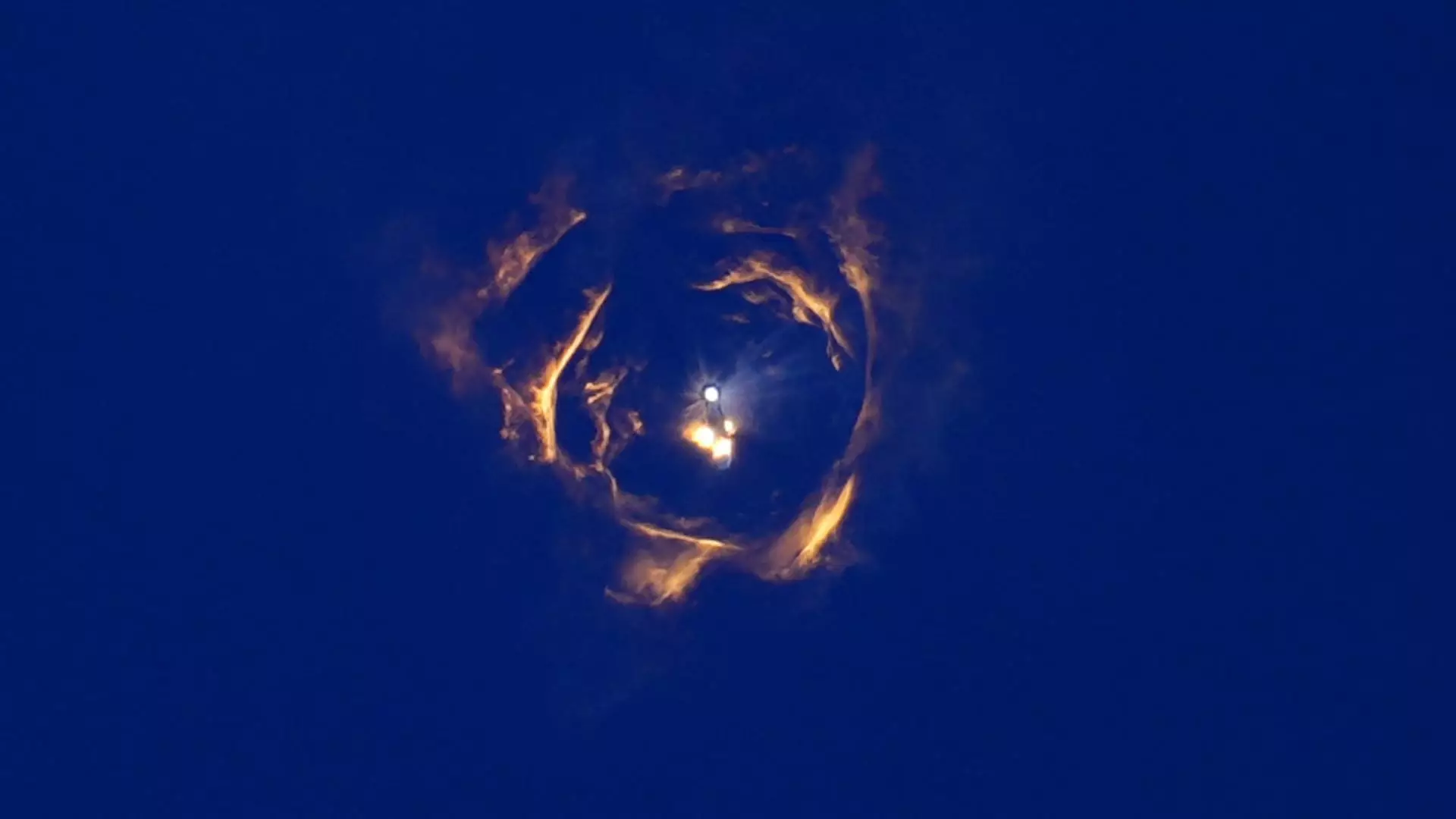On Thursday, SpaceX’s seventh flight test of its ambitious Starship rocket encountered a catastrophic failure, leading to significant disruptions in commercial air travel. The incident, which took place shortly after launch from SpaceX’s site in Brownsville, Texas, sent shockwaves through the aviation community, affecting dozens of flights in the surrounding airspace. As SpaceX continues to develop its flagship vehicle intended for crewed missions to Mars, this latest test has opened up discussions about safety protocols, air traffic management, and the burgeoning relationship between space exploration and commercial aviation.
Following the breakup of the Starship rocket, the Federal Aviation Administration (FAA) took swift action to mitigate potential risks. The agency reported that it had issued a warning to pilots in the vicinity about flying through a “dangerous area for falling debris.” This proactive measure included temporarily slowing and rerouting aircraft to ensure that there were no collisions with pieces of the disintegrated vehicle. Flight tracker, Flightradar24, indicated a notable number of airlines, including JetBlue and Spirit Airlines, had to adjust their flight paths as a direct result of the incident.
A JetBlue flight en route from Fort Lauderdale to San Juan was notably forced to divert back to its original departure airport after nearly two hours in the air. This incident highlights how a single aerospace event can ripple through the broader air traffic network, causing inconvenience and disruption for countless passengers.
Despite the chaos, the FAA reported no injuries or significant property damage due to the falling debris. This factor will likely allay some concerns from the public and aviation industry alike; however, it raises questions about the adequacy of current regulations governing spaceflight activities in close proximity to commercial air traffic. Airline representatives, including those from American Airlines, reported that fewer than ten diversions occurred as a result of the incident, indicating that the operational response protocols for such emergencies may need reevaluation.
The lack of immediate comments from SpaceX and the affected airlines underscores a growing tension between rapid space enterprise and the established norms of commercial aviation. As spaceflight becomes more routine, maintaining a collaborative framework for air traffic management will be critical for both safety and efficiency.
This incident not only serves as a reminder of the perils associated with rocket launches but also emphasizes the need for robust systems that balance the demands of both spatial and aviation sectors. As private companies like SpaceX push the limits of what is possible in aerospace, regulatory bodies must keep pace with these developments to ensure that safety takes precedence.
The interplay between aerospace and commercial aviation presents unique challenges, particularly in congested regions. As the lines between the two industries blur, clearer protocols and communication channels are imperative for safeguarding both air travelers and the integrity of space missions. The Starship incident stands as a crucial case study that could inform future policies and enhance the interdependence of these two industries as they navigate the skies and beyond.


Leave a Reply